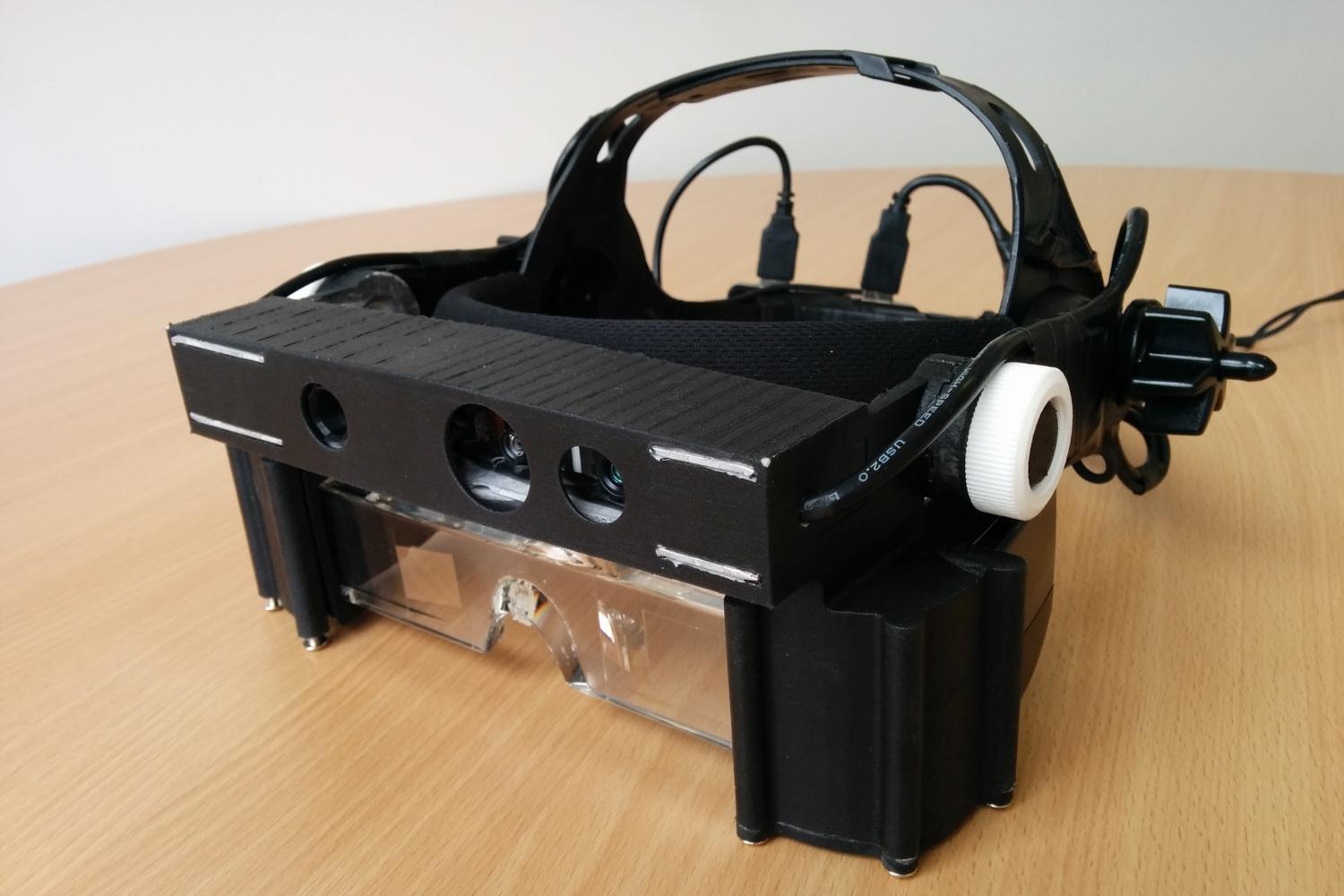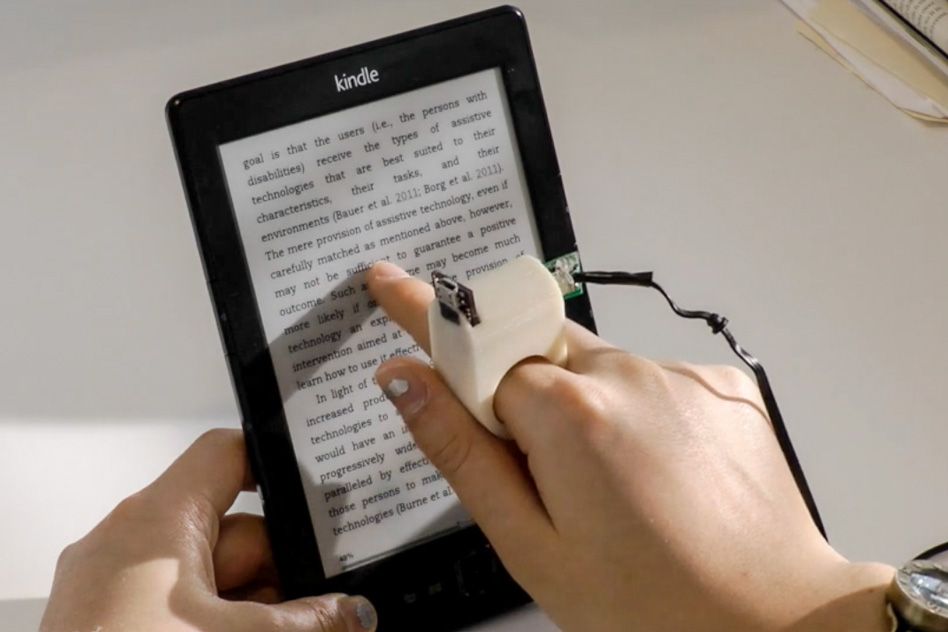AI-Powered Visual Aids: Enhancing Autonomy for Blind Users
AI-Powered Visual Aids: Enhancing Autonomy for Blind Users
Blog Article
Discover Innovative Tools Designed for the Aesthetically Impaired
The growth of innovative tools for the aesthetically damaged stands for a substantial improvement in accessibility and freedom. Technologies such as wise glasses with AI capacities and mobile applications created to provide acoustic descriptions are improving day-to-day experiences for customers.
Smart Glasses for Navigating

Smart glasses made for navigation are changing the way aesthetically impaired individuals interact with their setting. These innovative devices use a mix of video camera modern technology, synthetic knowledge, and acoustic feedback to supply real-time information regarding environments. By using obstacle discovery systems, clever glasses can notify individuals to possible hazards, enabling more secure wheelchair in both unknown and acquainted setups.
The integration of GPS innovation better enhances navigation abilities, enabling customers to obtain acoustic directions as they move. This hands-free method not just cultivates independence but additionally empowers aesthetically damaged individuals to navigate city landscapes with increased confidence. Additionally, numerous wise glasses are geared up with attributes that recognize spots and road indicators, providing contextual information that enhances the user experience.
Moreover, the development of these devices is constantly advancing, with companies functioning to improve the accuracy of item acknowledgment and expand the series of navigational functions. As clever glasses become a lot more easily accessible and economical, they hold the prospective to dramatically transform day-to-day live for visually damaged customers. Ultimately, these ingenious devices represent a crucial action towards inclusivity, offering boosted flexibility and a higher sense of freedom for individuals navigating the world around them.

Mobile Apps for Daily Living
Exactly how can mobile applications enhance the every day lives of aesthetically damaged people? Mobile applications are reinventing the way visually impaired users navigate their atmospheres, manage day-to-day tasks, and gain access to details. These applications provide crucial assistance through different capabilities, cultivating freedom and boosting top quality of life.
Numerous cutting-edge mobile apps are developed particularly for day-to-day living. Applications like Be My Eyes connect visually impaired customers with sighted volunteers through video telephone calls, allowing them to get real-time aid with jobs such as checking out labels or navigating strange areas. In A Similar Way, Seeing AI, created by Microsoft, utilizes expert system to explain environments, checked out text, and identify objects, properly changing a smartphone into a powerful tool for day-to-day assistance.
Furthermore, navigation applications customized for the visually damaged, such as Aira and BlindSquare, use audio-based directions and ecological information, allowing users to traverse their environments securely and confidently. Past navigation and prompt help, mobile apps also sustain organization and job administration, with attributes that help individuals set suggestions, develop to-do listings, and track appointments. In recap, mobile applications act as crucial resources, encouraging visually damaged people to lead even more independent and fulfilling lives.
Wearable Technologies for Help
Empowerment with technology is increasingly obvious in the world of wearable devices created to aid visually damaged individuals. These cutting-edge tools integrate effortlessly right into daily life, enhancing navigating and offering crucial responses to individuals. Smart glasses equipped with video cameras can acknowledge faces and check out message aloud, enabling individuals to interact more confidently in social and specialist settings.
One more noteworthy innovation is the usage of haptic comments systems in wearable gadgets. These systems utilize vibrations or various other responsive signals to share details concerning the customer's environment, such as obstacles or modifications in surface, boosting flexibility and safety and security. Wearable modern technologies likewise include wristbands that link to smart devices, signaling customers to notifications with subtle vibrations, hence boosting connection without dependence on aesthetic signs.
As these modern technologies proceed to progress, they are not only improving freedom for aesthetically impaired individuals yet likewise promoting a greater feeling of addition in society. By linking the space between obstacles dealt with in everyday living and the possibility for autonomy, wearable technologies act as critical tools in the quest for equality and empowerment for those with aesthetic problems.
Sound Description Devices
Audio summary tools play an important function in enhancing ease of access for visually damaged individuals, supplying them with the ability to engage with visual media. Braille displays and notetakers. These devices provide narrated summaries of key visual elements in films, tv shows, and live performances, ensuring that customers can completely comprehend the context and feelings conveyed with visuals
Sound description can be integrated right into numerous platforms, consisting of streaming services, movie theater testings, and live movie theater. Many prominent streaming services currently consist of audio description as an accessibility function, permitting viewers to select it conveniently. In enhancement to mainstream media, specialized apps also exist, offering audio summaries for art exhibitions, galleries, and various other cultural occasions.
The effectiveness of audio description depends upon the skill of the storytellers, that should share visual information succinctly without diminishing the original sound. Innovations in this field are likewise leading the way for even more tailored experiences, where customers can readjust the level of information and pacing according to their choices.
Braille Innovations and Gadgets
Braille developments and tools have substantially transformed the method visually damaged people interact with text and details. Modern innovations have led to the development of versatile tools that improve literacy and self-reliance amongst customers.
In addition, portable Braille notetakers combine standard Braille input with modern-day capabilities, promoting note-taking, organizing, and record editing on the move. Assistive technology for the blind. These compact devices commonly feature text-to-speech abilities, connecting the space in between Braille and auditory details
Furthermore, ingenious Braille printers have emerged, permitting customers to create Braille labels, files, and educational products effectively. This availability fosters greater engagement in professional and instructional atmospheres, ultimately advertising inclusivity.
In addition, research study into clever Braille innovations continues to increase. Tools that integrate expert system are being discovered to supply real-time navigation assistance and contextual information, boosting the customer experience in diverse settings. Generally, these developments mirror a commitment to empowering aesthetically impaired people through modern technology, ensuring they can conveniently gain access to and involve with the More Help world around them.

Final Thought
The innovation of cutting-edge tools for the aesthetically damaged considerably boosts self-reliance and quality of life. These technologies not just foster greater incorporation however also advertise autonomy in day-to-day activities, inevitably contributing to an extra obtainable and equitable culture for visually damaged individuals.
As clever glasses become page extra available and economical, they hold the potential to substantially transform everyday life for aesthetically impaired individuals. Mobile applications are transforming the means visually impaired individuals browse their environments, handle day-to-day tasks, and gain access to details. Apps like you can check here Be My Eyes link aesthetically impaired users with sighted volunteers by means of video clip calls, enabling them to obtain real-time assistance with tasks such as reviewing tags or navigating strange rooms.Additionally, navigation applications customized for the visually impaired, such as Aira and BlindSquare, provide audio-based instructions and ecological details, enabling users to traverse their surroundings securely and with confidence.The innovation of innovative tools for the aesthetically damaged dramatically enhances self-reliance and high quality of life.
Report this page